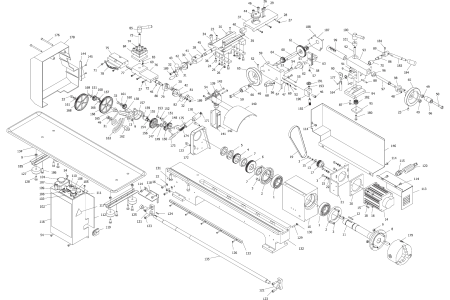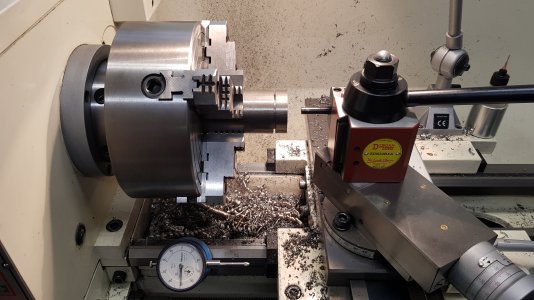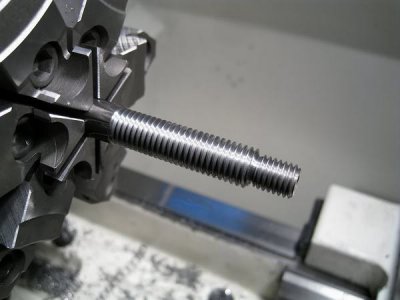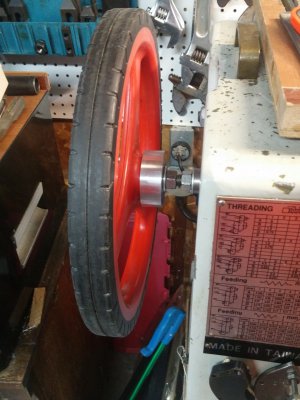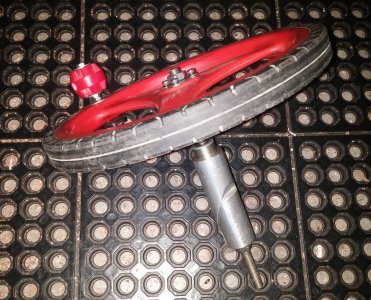If I turn the chuck manually, the leadscrew advances. How would one attach the handwheel?
WobblyHand, I attached a handwheel to my PM1236-T by attaching a solid wheel bored centrally to the same size as my spindle bore using a collar attached by an interference fit. This setup allows you to maintain your spindle bore for longer pieces and the solid wheel helps prevent you from getting entangled in the wheel spokes. It is removable but it pretty much stays on the machine. I use it all the time, especially when doing things like centering a piece in the 4JC. I bet a similar setup will work for your project. It amazing how one simple project leads to others. I have a pretty detailed description of it here on H-M.
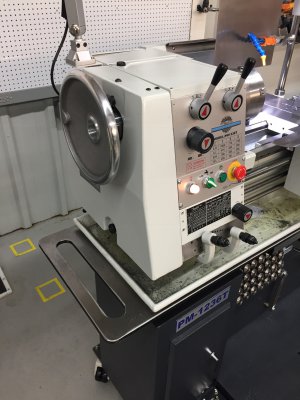
Mike
